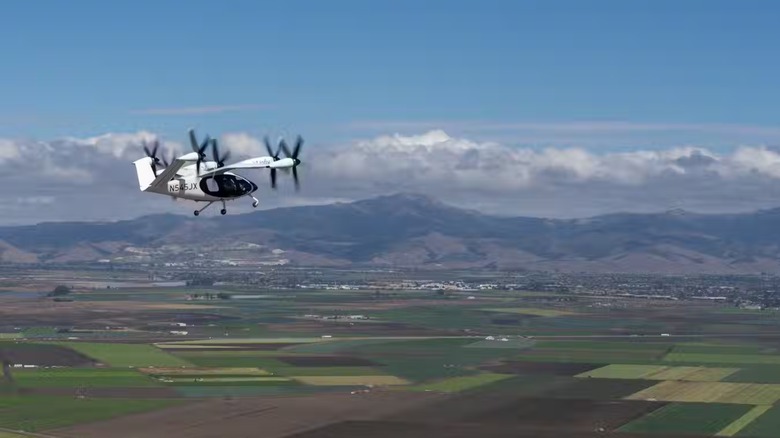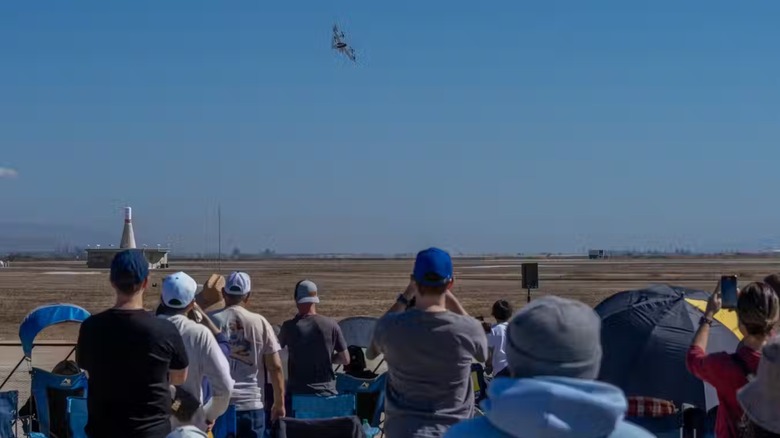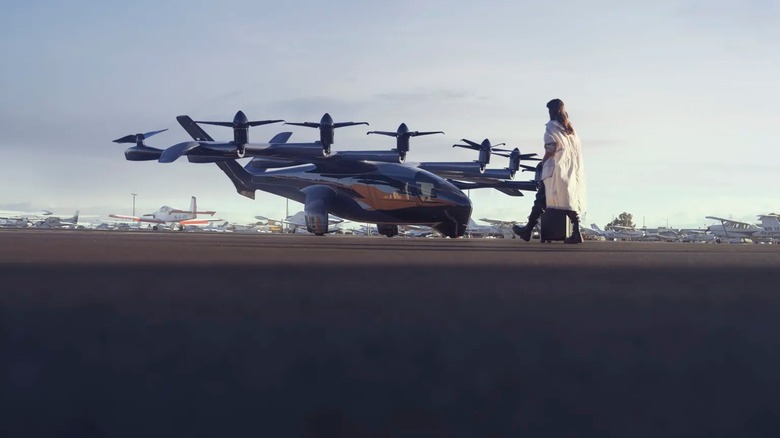These Two Companies Are Competing Neck-And-Neck To Bring Flying Taxis To The US
Imagine commuting from JFK to Midtown in under ten minutes. Imagine skipping rush hour entirely with a vertical liftoff rather than a carpool lane. That's the promise Joby Aviation and Archer Aviation are racing to deliver on. The two California-based companies are leading a mission to bring electric vertical takeoff and landing (eVTOL) aircraft, or flying taxis, to American skies. In a recent public demonstration, they both showed they think that air taxis are about to change the future of travel, as it's an industry on the brink of reality.
The demonstration took place at a U.S. air show this month, with both Joby and Archer showcasing their working prototypes to the public for the first time. It marked a major milestone in what's becoming a billion-dollar showdown. At the event, Joby's sleek, six-rotor aircraft quietly rose into the air and hovered with surprising stability. Archer's Midnight model also performed impressively, as it showed off its short-hop mobility that could one day save you from rush-hour commutes.
If everything goes according to plan, the next few years could transform the way people move across American cities. The FAA's Innovate28 program aims to have air taxi operations underway in at least one major U.S. city by 2028 with a view to nationwide adoption. Both Joby and Archer are betting that early routes between airports and downtown centers will prove that the model works financially, logistically, and safely. Whichever company manages to launch first will quite literally redefine what it means to take off in the American transportation market.
What we know about the competing companies
Joby Aviation was founded in 2009 and has since had the backing of big names like Toyota and Delta Air Lines. This investment portfolio is just one factor that makes it one of the more serious contenders in the industry. Its aircraft promises speeds of up to 200 mph and a range of 100 miles for intercity travel as well as urban hops. The company has already received a Special Airworthiness Certificate from the FAA, and it signifies a crucial step toward commercial operations. Joby Aviation unveiled its eVTOL air taxi flight video for the first time in early 2021. Now, it's running test flights in California and at Edwards Air Force Base, in partnership with the U.S. Air Force, which validates performance and safety under real-world conditions.
Archer Aviation, on the other hand, is moving just as aggressively. It was founded in 2018 and is backed by United Airlines and Stellantis to help position its Midnight eVTOL as the Uber Black of the skies, designed for short, frequent flights between airports and downtown hubs. The company claims its aircraft can carry four passengers and a pilot, fly at speeds of up to 150 mph, and recharge in about ten minutes. But Archer's business plan isn't just about manufacturing tech, but rather about operating an actual air taxi network. United Airlines has already announced plans to launch Archer's first commercial route between Newark Liberty Airport and downtown Manhattan as early as 2026. This is a trip that would shrink from 45 minutes by car to under 10 minutes in the air.
What lies ahead for urban air mobility?
Both Joby and Archer have joined the FAA's Advanced Air Mobility pilot program. This means they work alongside regulators, local governments, and infrastructure planners to make sure their vehicles integrate safely into existing airspace. The appeal is obvious as gridlocked traffic costs Americans billions of hours and gallons of fuel each year. A 10-minute aerial ride over congested streets could be the ultimate travel hack. But the execution is anything but simple when you consider how the air taxis will work. It's a delicate balance as they will need to share the skies with helicopters, drones, and airplanes while staying quiet enough to avoid becoming the next urban noise complaint.
Yet both Joby and Archer seem to have solved the noise problem. According to attendees of the recent demo, the aircraft were astonishingly quiet. That detail could make or break the industry's acceptance because no one wants a city filled with buzzing sky traffic. The air taxis will also need "vertiports," which are small, high-tech landing pads equipped for charging and passenger handling. These vertiports will have to be scattered across dense urban areas, so city planners might need to rethink zoning laws, while energy providers must prepare for high-voltage charging infrastructure.
Still, the biggest race isn't just technological. It's regulatory, logistical, and cultural. It is going to come down to who can win over the FAA, local governments, and the public first. And as both Joby and Archer push toward commercial certification, the question isn't whether flying taxis are coming; it's which company will take off first.


